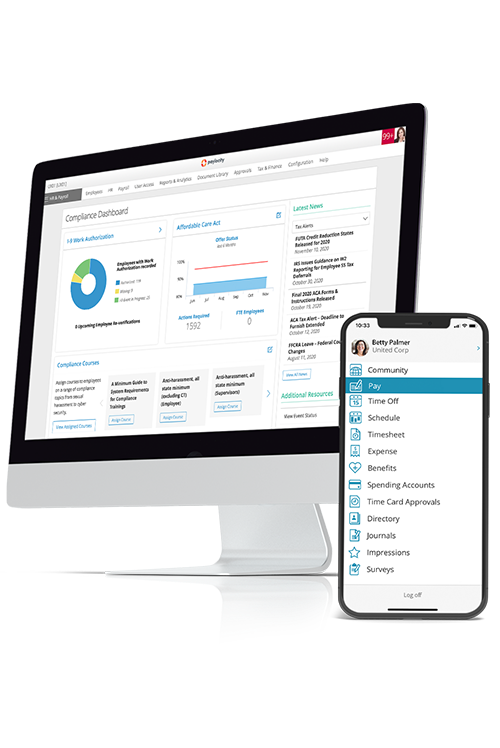
How to Prevent Phishing Scams at Your Organization
Safeguard your organization with these top phishing prevention tips.
Phishing attacks are on the rise. Both individuals and companies are vulnerable to these threats, which can lead to devastating consequences like identity theft and loss of financial and other sensitive data. Learn what phishing is and how to protect yourself and your organization against these attacks.
What is Phishing?
'Phishing' is a cybercrime where individuals use scam emails, text messages, or phone calls to trick their victims into sharing personal information. Their aim is often to trick you into visiting a website, which may download a virus onto your computer or get you to reveal sensitive data including account numbers, banking/credit card details, and usernames/passwords.
For example, you may receive an email attempting to lock your retail account, or your bank might prompt you to log in and approve a purchase.
The Consequences of Phishing
Approximately 73% of all data breaches occur from email social engineering attacks. An average data breach costs organizations $3.92 million. Several consequences arise from falling victim to a phishing attack, including:
- Compromised data
- System or services outage
- Ransomware
- Damage to reputation
- Damaged trust by employees and customers
- Loss of revenue
- Loss of intellectual property
Podcast: Cybersecurity Challenges in the Modern Workforce with Nate Peacher
Types & Examples of Phishing Attacks
| Type | Description |
|---|---|
| Emails appear to be from a trusted source and often demand sensitive information, such as login credentials or financial details. | |
| Spear | Spear phishing is a malicious, spoofed email that seems to come from the target’s own company, generally someone in a position of authority or someone the target knows personally. |
| Whaling | The attacker tailors the communication with people working for their target, often encouraging them to transfer funds or give up other important information. |
| Pharming | The attacker aims to get someone to enter personal information into the fake mirror website to gain further access. |
| Vishing | A scam that often takes place over the phone, email, or through voice-over-internet protocol calls. |
| Smishing | A scam that often takes place through text messaging. |
| CEO Fraud or Impersonation | The attacker will use an email address familiar to the victim and urgently ask them to update employee details, transfer funds, or buy gift cards. |
| Session Hijacking | The attacker steals confidential information from a company’s web server. |
| Malware | The attacker includes malicious attachments in a phishing email, and when the recipient clicks, the malicious software downloads to the user's computer unknowingly. |
How to Identify Phishing Emails
The first step in protecting yourself from these attacks is to recognize common signs:
- Suspicious Sender: Check the email address. Phishing emails often use fake or similar-looking addresses to mimic legitimate sources.
- Urgency: Phishing attacks leverage urgency to encourage you to click and reveal data without thinking clearly.
- Spelling and Grammar Mistakes: Look for spelling and grammatical errors.
- Unexpected Attachments or Links: Be cautious of attachments or links in emails from unknown or unpredictable sources, as they may contain malware or lead to phishing websites. Helpful hint: Hover over the sender’s email address and the links embedded in the email before clicking.
- Requests for Personal Information: Legitimate organizations typically do not ask for sensitive information such as passwords or credit card numbers via email.
How to Prevent Phishing Attacks
- Think before you click. Do not click links directly from an email from an unknown source.
- Never provide personal or financial information in response to an unsolicited request. When in doubt, go directly to the natural source
- Check email domains and links. If an email claims to be from a known source, you can hover over the email name or links in the body to confirm the URL matches the domain name.
- Never provide a password over the phone or via email. No one should ask for your password.
- Keep your software updated. Keep the software on your phone and computer up to date.
- Be wary of pop-ups. Avoid clicking pop-ups, or even better, block all pop-ups.
- Use multi-factor authentication. Make it more difficult for phishing.
- Report suspicious activity. Follow your company's protocol to report suspicious activity, but you can also report to the Federal Trade Commission (FTC) at https://reportfraud.ftc.gov/.
- Encourage employees to take regular cybersecurity training. You can use a learning management system to take and share courses with employees.
- Use trusted apps or bookmark links. Bookmark your official login screen for things like your bank or use the trusted app to access to avoid sharing login details on a spoof site.
- Report suspicious emails as directed by your organization's policies.
Want to learn more: Download our Inforgraphic: 8 Ways to Protect Yourself Against Phishing Attacks
The Importance of Phishing Awareness and Prevention Training
Keep your personal data and business secure using the tips outlined in this article. And remember, cybersecurity is everyone's responsibility, so communicate the importance of staying vigilant with your teams. Requiring training in your learning management system can be a great way to educate your teams with the knowledge and skills needed to defend themselves and your organization against cyber threats.
Paylocity is Committed to Cybersecurity
Safeguarding data is a top priority at Paylocity. We maintain a proactive stance through our decision-making processes, technology, product offerings, and infrastructure, all aimed at maintaining vigilance in safeguarding information integrity.


?$Hero-Card$)
